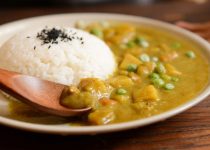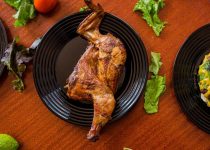Want to Master Blackstone Pizza Dough for Your Backyard Parties?
So, I've been thinking a lot about how to make backyard parties a bit more memorable, and I've landed on perfecting my Blackstone pizza dough. It's not just about throwing together flour and water; there's a real art to getting that crispy, yet chewy crust that everyone raves about. I've been experimenting with different flours, hydration levels, and yeast types to see what gives the best texture and flavor. I'm pretty excited to share what I've learned about the techniques that really make a difference. Curious about how a few simple tweaks can transform your pizza? Let's just say, you might want to stick around for this.
Table of Contents
Key Takeaways
- Choose high-protein flour like bread or 00 for the best dough elasticity and flavor.
- Ensure dough proofs in a warm, draft-free environment for 24-48 hours to enhance yeast activity.
- Maintain griddle temperature around 400°F and preheat well to achieve a crispy crust.
- Experiment with different toppings like classic Margherita or BBQ Chicken to diversify flavors.
- Use proper kneading techniques and allow adequate hydration based on your flour type for a smooth dough.
Choosing the Right Ingredients
When making Blackstone pizza dough, selecting high-quality ingredients can make all the difference. Let's talk about what you need for that perfect crust.
First up, flour – it's the backbone. Go for high-protein, like bread flour or even better, 00 flour, which is super fine and makes for a stellar light and crispy texture.
Next, water. Sounds basic, right? But the temperature matters more than you think. Lukewarm is your friend here because it'll help wake up the yeast without killing it.
Speaking of yeast, this little guy is essential. You've got options: active dry, instant, or fresh. Fresh yeast is fantastic for flavor, but it's a bit fussy and harder to find. I usually stick with instant because it's reliable and easy to use. Whatever you choose, make sure it's fresh; old yeast just won't do the job.
Ingredient freshness isn't just a buzzword; it's the secret to a dough that tastes like it came straight out of a Neapolitan pizzeria. Keep everything fresh, from your flour to your yeast, and you're on your way to mastering Blackstone pizza dough. Trust me, your backyard party guests will notice the difference.
Mixing and Kneading Techniques
Now that we've picked our ingredients, let's get our hands dirty with the mixing and kneading part. Choosing the right flour is essential—it really makes or breaks the dough.
We'll also talk about how much water to add and how to knead your dough to pizza perfection.
Choosing the Right Flour
Selecting the correct flour can be essential for the success of your pizza dough, so let's explore how to mix and knead it properly. Flour freshness and gluten content are key factors I consider.
Here's what I focus on:
- Flour Freshness: Always check the packaging date. Fresh flour has better yeast activation, giving you a livelier dough.
- Gluten Content: Go for high-gluten flour. It gives the dough elasticity and strength, perfect for that chewy crust we all love.
- Mixing Technique: I start with a well in the center, gradually incorporating water and oil, then knead until the dough is smooth and springy.
Optimal Dough Hydration Levels
Understanding the appropriate hydration level for your dough is essential because it affects everything from texture to how well it handles during kneading. When we're discussing hydration, it's all about the water absorption rate of your flour, which can significantly impact your final product. Let's delve into hydration testing to pinpoint that perfect balance.
| Flour Type | Ideal Hydration | Handling |
|---|---|---|
| All-Purpose | 58-60% | Easy |
| Bread | 60-65% | Moderate |
| Whole Wheat | 65-70% | Sticky |
| 00 | 55-57% | Smooth |
| Gluten-Free | 75-80% | Challenging |
Getting this right means your dough will be a dream to work with, and who doesn't want that at their backyard bash?
Effective Kneading Techniques
Kneading your pizza dough properly can make or break the texture of your crust. I've found that mastering a few key techniques really steps up the game. Here's my go-to list for effective kneading:
- Choose the Right Surface: A sturdy, essential surface is critical. I prefer using a marble slab because it keeps the dough cool and doesn't stick.
- Use Your Full Hand Strength: Don't be shy! Push down and outward with the heels of your hands, then fold the dough back over itself. Repeat this until the dough feels smooth and elastic.
- Time It Right: Typically, 10 to 15 minutes of kneading should do the trick. Watch for the dough to become less sticky and more supple.
Proofing the Dough
After mixing and kneading, it's essential to get the proofing just right.
I'll chat about the best temperature for proofing and how long you should let your dough rise.
These factors can make or break the texture of your Blackstone pizza, so let's get into it!
Optimal Proofing Temperature
For the best rise, keep your dough at a cozy 75 to 78 degrees Fahrenheit while it proofs. This sweet spot really makes a difference because ambient influences can mess with your yeast activity if you're not careful. You don't want a chilly room slowing down your dough's rise or a hot spot speeding it up unevenly.
Here's a quick checklist to keep your proofing game strong:
- Check the room temperature: Use a thermometer to confirm it's within the ideal range.
- Avoid drafts: Keep your dough away from open windows or air vents.
- Consistent warmth: Consider using a proofing box or a slightly warmed oven (turned off!) to maintain steady temps.
Mastering these steps will seriously up your pizza game!
Proofing Time Range
Now that we've got our temperature just right, let's talk about how long you should let your dough proof to get that perfect pizza base. Generally, the proofing time can vary, but I've found a range that works wonders—anywhere from 24 to 48 hours. This longer time really lets the yeast activity do its magic, creating those airy, light textures we all crave in a pizza crust.
Keep in mind, the size of your container matters too. A larger container allows the dough more room to expand, enhancing the yeast's work. Don't cram your dough into a tiny bowl; give it space to breathe and grow. Trust me, it'll make all the difference in your pizza game!
Rolling and Shaping
Once your dough is ready, it's time to roll it out and shape it into that perfect pizza base. Getting the hang of this can truly enhance your pizza game. Here's what I usually do to make sure my bases are just right.
First off, dough elasticity is vital. After the dough has proofed, it should be stretchy yet resistant. This elasticity lets you shape it without tearing, which means you can achieve that classic thin center and thicker crust. I like to give it a good knead for a minute before rolling to really activate the gluten.
When it comes to shaping tools, I keep it simple:
- Rolling Pin: Ideal for beginners. Roll out your dough from the center outward, aiming for even thickness.
- Dough Docker: This tool helps prevent air bubbles. A few quick rolls over your base does the trick.
- Your Hands: My favorite method. Gently stretch the dough from the center, rotating it gradually. It's all in the wrist—keep it light and airy.
Cooking on the Blackstone Griddle
Let's fire up the Blackstone griddle and start cooking the perfect pizza crust. Now, I've got the dough all rolled out and ready, so it's time to talk about the nitty-gritty: griddle maintenance and temperature control. These two are big deals when you're aiming to master this game.
First off, keeping your griddle clean and well-seasoned is essential. A well-maintained surface guarantees your pizza won't stick and will give it that dreamy, crispy bottom we all love. Before and after each cook, I give it a good scrape and apply a light coat of oil; it really makes a difference.
Now, onto temperature control. This is where it gets exciting. You need that griddle hot, but not scorching. Around 400°F is perfect because it cooks the dough through and gets that crust golden without burning it.
Here's a quick table to guide you through the cooking process:
| Step | Action | Tip |
|---|---|---|
| 1. Preheat | Heat the griddle to around 400°F | Use an infrared thermometer |
| 2. Place Dough | Lay the rolled dough on the griddle | Don't overcrowd the surface |
| 3. First Side Cooking | Cook until bottom is golden | Check frequently |
| 4. Flip | Carefully flip the dough | Use two spatulas for stability |
| 5. Second Side Cooking | Cook until this side is crispy | Lower heat if it cooks too fast |
Mastering these steps and keeping an eye on your griddle's condition will seriously up your pizza game. Let's get cooking and impress everyone with your skills!
Serving and Topping Ideas
After mastering the perfect crust, choosing the right toppings can transform your pizza into a culinary masterpiece. I'm all about experimenting with different cheese variations and sauce selections to really make each pizza a unique treat. Let me walk you through some of my go-to choices that always impress my guests.
Here are three topping combos that never fail to wow:
- The Classic Margherita: Start with a simple tomato sauce, then layer on slices of fresh mozzarella. After it comes off the grill, I like to add fresh basil leaves and a drizzle of extra virgin olive oil. It's traditional and always a hit.
- BBQ Chicken Bonanza: For this one, spread a generous amount of BBQ sauce instead of your typical tomato sauce. Top it with shredded mozzarella, cooked chicken (I prefer it slightly smoky), red onions, and cilantro. It's a savory twist that packs a punch.
- White Pizza Magic: Skip the tomato sauce altogether here. Mix ricotta with a bit of garlic and spread it as the base. Add cooked spinach, mushrooms, and a good blend of mozzarella and parmesan. This one's for the cheese lovers!
Experimenting with these ideas, you'll soon find your own favorites!
Frequently Asked Questions
Can I Make Gluten-Free Blackstone Pizza Dough?
Yes, I can make gluten-free Blackstone pizza dough using alternative flours like almond or coconut to achieve the right dough consistency. It's all about experimenting to find what works best for you!
How Do I Store Leftover Pizza Dough?
I usually store my leftover pizza dough in the fridge. Wrapping it tightly in plastic wrap helps maintain its longevity. Remember, good refrigeration is key to keeping the dough fresh for your next bake!
Is Pizza Dough Vegan-Friendly?
Pizza dough's usually vegan-friendly, as it's mainly flour, water, salt, and yeast. Just mind your dough's hydration and opt for vegan toppings to keep everything plant-based. Perfect for nailing those pizza skills!
Can I Freeze Blackstone Pizza Dough?
Yes, I can definitely freeze Blackstone pizza dough. Using proper freezing techniques guarantees the dough texture remains perfect for later use. Just wrap it well and thaw properly before your next pizza party!
What's the Best Season to Host a Pizza Party Outdoors?
I'd say early fall's the best for an outdoor pizza party. Weather's usually stable and cool, perfect for gathering. Plus, space planning's easier when you're not sweating under the summer sun!




